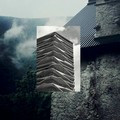Buchner Bründler Architekten
House of Art - Modern Art Gallery in České Budějovice, Náměstí Přemysla Otakara II. 38, České Budějovice
February 14, 2019 - March 17, 2019
|
Buchner Bründler ArchitektenHouse of Art - Modern Art Gallery in České Budějovice, Náměstí Přemysla Otakara II. 38, České BudějoviceFebruary 14, 2019 - March 17, 2019
https://dumumenicb.cz/en/vystava/buchner-brundler-architects-en/ Curator: Michal Škoda Lecture with the architects: 5pm, Thursday 14 Feb. / Student Church of the Holy Family – Karla IV. 22, České Budějovice The first of the gallery’s three architecture exhibitions planned for this year is by the Swiss studio of Buchner Bründler Architekten from Basel. Buchner Bründler’s main focus is on the city as a constructed form and living organism. The main characteristic feature of this approach is a dialogue with the local environment. The studio’s architects always respond to the context of a place, and endeavor to work with it in a sensitive manner, to complement existing structures and to develop the place further into a new functional whole. Buchner Bründler places great emphasis on meticulous workmanship and a precise elaboration of details. Many of their buildings are the result of architectural competitions, which Buchner Bründler view as the research stage of their work, when they can experiment with new materials, discover new constructional possibilities, and develop the buildings’ typology. In addition, thanks to its smaller volume, their work for direct clients allows them to shift their priorities and explore new ways of thinking. Of the studio’s many realized projects, we should mention the residential/commercial Volta Zentrum, which revived its surroundings thanks to the polymorphism induced by the urban environment. Or the Hotel Nomad, whose historical facade creates an atmosphere of grandeur. In another project, their respect for an old farm house in Linescio resulted in a remarkable house within a house. And their addition to the Accademia di Architettura in Mendrisio shows how the impact of an assertive structure on the existing building can be reduced by beginning below ground. The architecture of Buchner Bründler does not succumb to the return of formalism, because each project develops its own identity. What all their projects have in common is the same method or approach, involving conceptual work with space, clearly formulated craftsmanship, and the corresponding use of materials. The search for a respectable solution with an eye towards material may, for instance, lead to the use of rough concrete, whose atmospheric mass and intensity provide a sense of security. Buchner Bründler Architekten was founded in Basel in 1997 by Daniel Buchner and Andreas Bründler. In 2003, they were accepted to the Federation of Swiss Architects (Bund Schweizer Architekten), and in 2008 and 2009 they were both guest professors at EPFL (Ecole Polytechnique Fédérale in Lausanne). In 2010–2012, they were guest lecturers in design at ETH Zurich (Eidgenössische Technische Hochschule Zürich/Swiss Federal Institute of Technology in Zurich). Daniel Buchner was born in 1967 in Berneck, Switzerland. After apprenticing as a structural draughtsman in Berneck from 1984 to 1987, he studied architecture at the St. Gallen School of Engineering (Ingenieurschule St. Gallen) from 1988 to 1989 and then at the Engineering School of Both Basels (Ingenieurschule beider Basel) from 1989 to 1993. After his studies, he worked for Morger & Degelo Architekten in Basel from 1994 to 1997. Andreas Bründler was born in 1967 in Sins, Switzerland. After an apprenticeship as a structural draughtsman in Zug from 1984 to 1987, he studied architecture at the Engineering School of Both Basels (Ingenieurschule beider Basel) from 1989 to 1993. He then worked for the architectural office of Miller & Maranta in Basel from 1994 to 1997. With its precisely installed series of images, the České Budějovice exhibition Constellations – Correlations represents a challenge for the viewer and an impulse for reassessing conventional approaches to presenting architecture. The selected constellations of images in each room are designed to stimulate a dialogue among the various projects and buildings. Visitors can look for details, relationships, and differences in a constantly remixed and recombined perception of images. The process of comparative observation reveals aspects that are opposite, contradictory or related. This experience reflects the architecture of Buchner Bründler. Mutual interrelationships are comparable in the sense that each individual project is the result of individually predominant circumstances and not guided by a recurrent formalism. A typical feature of every new design is that it responds to changing contexts and specific urban and atmospheric conditions. The buildings have a relationship to their locality, which makes them distinctive every time. We can thus compare eight projects: large urban designs as well as smaller buildings focused more on inner depth that outer complexity. This comparative approach serves as a sensory tool for an understanding that focuses not just on the architecture itself but also on the specific conditions of each exhibited project as seen from various different angles. The images of the buildings are not silent witnesses on the gallery wall providing a mere look at depictions of reality. They enter into the room and become objects that seek a direct, visual, and physical confrontation with the viewer. The exhibition challenges viewers to use their sensory perception and imagination to see the architecture of Buchner Bründler in a new way and more intensively. The depicted building details become almost tangible, their powerful physical presence and precise details and carefully shaped construction enter the viewer’s consciousness. Individually formulated and dominant materiality is presented through the buildings themselves, and the relationship between various urban buildings and solutions is revealed. The exhibition by the studio of Buchner Bründler is, like their buildings, an experiment in spatiality and perception. |


